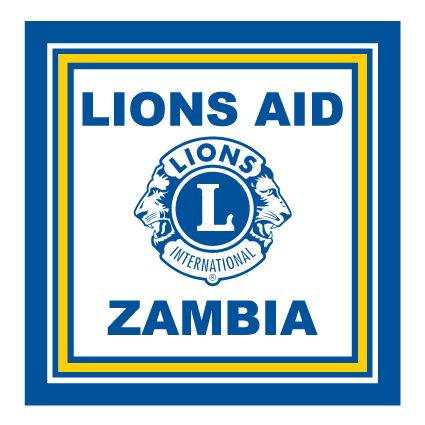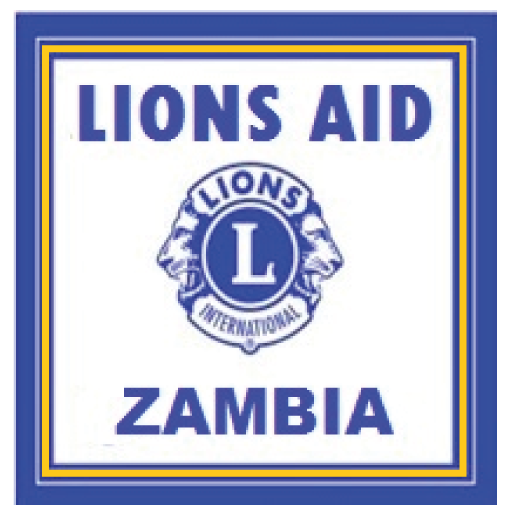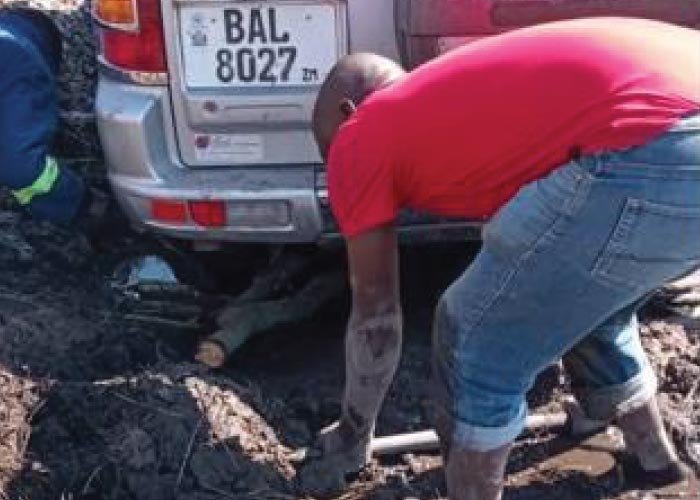Nalolo District is one of the 14 districts in Western Province that were endemic to trachoma at baseline. At a recorded prevelence of 13.4 in 2016, Nalolo District received a set of intervention as recommended in the decision table and was due for another survey that recorded a prevelence of 9.9 in 2018. Following these results, another set of interventions was delivered in the districts and a survey was scheduled for 2022.
To conduct this survey, a team of Graders and Recorders were tasked to screen communities. The distribution of teams was guided by the sampling frame and information from the district. All teams were sent out including the team that was assigned to visit Suu Rural Health Post. On the way back from data collection, in Nalolo District’s Suu Rural Health Post, this team found themselves in an unfortunate circumstance in the Zambezi plains. After getting into a pool of water, the car got stuck. The more they tried to get it out, the deeper it went into the mud. This event happened on 16 July 2022 in the evenings. A rescue vehicle was sent but only located the team the next morning. The local community members were engaged to help dig out the car. They also layered branches under it to make it easy to pull it out. In the pictures is the vehicle stuck in the mud and the community members digging it out.
Mr. Lukavu, one of the Trachoma Graders, shares his experience below:
In June this year, we set out to visit Suu, a very remote community in Nalolo district, in our search for evidence of the presence of blinding trachoma in Western Province. Suu means “dark” or “black” in the Lozi language. We left for Suu very early in the morning, just before 06:00hrs, with everything we needed for the survey. We were warned about the difficulties we would face along the way. There is no direct route to Suu. We were simply going to follow the directions of a village guide who was accompanying us. The terrain is also very sandy.
We drove for more than ten hours, passing through the muddy Zambezi plains and very sandy Zambezi riverbanks before arriving at Suu Health Center. We sampled the targeted 30 households shortly before dark. We found a lot of people from the community with Trachoma at its different stages. It was already dark when we started driving back, but we were determined to get back to Mongu because the survey schedule was very tight. It was around 20:00 hours when we arrived at the muddy areas of the Zambezi. Our village guide, who provided “the campus,” became disoriented due to the pitch black night. We got lost in the middle of nowhere.
Our vehicle became stuck in the mud of the Zambezi plain. Even if the station wagon landcruiser had four-wheel drive, it couldn’t get through the slick mud. We were in the middle of nowhere. The nearest village was about 5 kilometers away. We were discovered by an ox-cart for a farmer and a vehicle which carried two teams from our group. With all efforts applied we unable to get the vehicle out.
We waited until morning when it was clear to see, we engaged some community members to help us dig the car out. We were also located by the rescue vehicle that couldn’t locate us in the night. We all worked together until the car came out.


